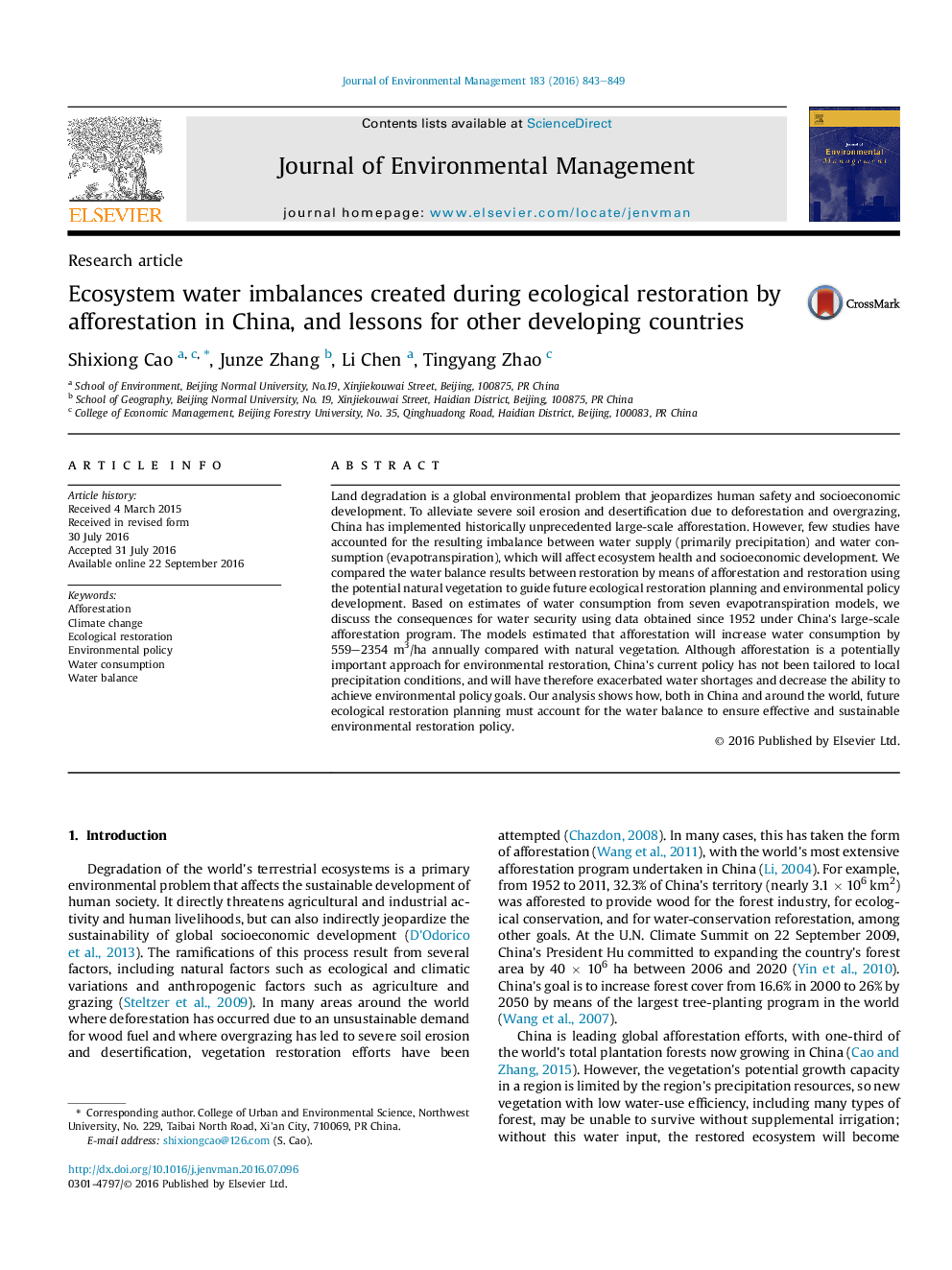| Article ID | Journal | Published Year | Pages | File Type |
|---|---|---|---|---|
| 5117222 | Journal of Environmental Management | 2016 | 7 Pages |
â¢Ecological restoration requires balancing water supply and consumption.â¢Maintaining high water-use efficiency is therefore necessary.â¢Restoration managers must account for the water balance in restoration plans.
Land degradation is a global environmental problem that jeopardizes human safety and socioeconomic development. To alleviate severe soil erosion and desertification due to deforestation and overgrazing, China has implemented historically unprecedented large-scale afforestation. However, few studies have accounted for the resulting imbalance between water supply (primarily precipitation) and water consumption (evapotranspiration), which will affect ecosystem health and socioeconomic development. We compared the water balance results between restoration by means of afforestation and restoration using the potential natural vegetation to guide future ecological restoration planning and environmental policy development. Based on estimates of water consumption from seven evapotranspiration models, we discuss the consequences for water security using data obtained since 1952 under China's large-scale afforestation program. The models estimated that afforestation will increase water consumption by 559-2354Â m3/ha annually compared with natural vegetation. Although afforestation is a potentially important approach for environmental restoration, China's current policy has not been tailored to local precipitation conditions, and will have therefore exacerbated water shortages and decrease the ability to achieve environmental policy goals. Our analysis shows how, both in China and around the world, future ecological restoration planning must account for the water balance to ensure effective and sustainable environmental restoration policy.
Graphical abstractDownload high-res image (264KB)Download full-size image
